
Eichler Home Becomes an Art Installation
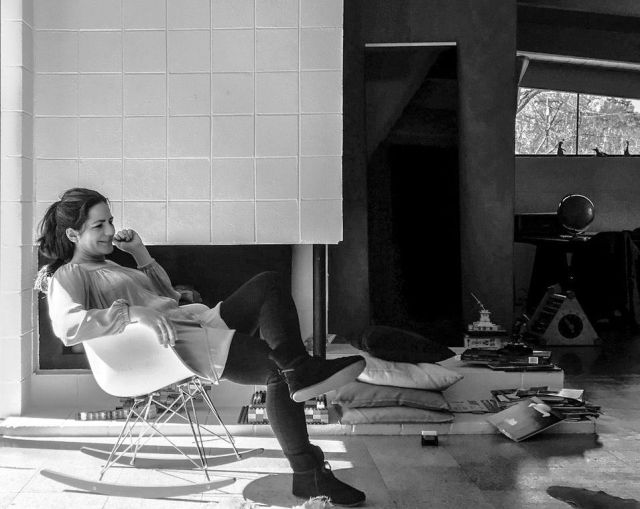 |
|
|
The prospect of moving from central London to a Peninsula suburb was not initially inspiring to artist Martha Sakellariou. “Modern suburbia was not something I was particularly excited about,” she says.
“While Googling ‘life in California’ I came across Eichler houses. They seemed spectacularly modern, light and elegant, but I assumed they were rare and a thing of the past. They were very representative to my idea of American Dream, the typical and even utopian ‘60s California dream house.”
Arriving in town she discovered that Eichlers were more than a thing of the past. One of her artist friends from London’s Royal College of Art was actually living in an Eichler in Palo Alto – and soon, so was Martha, along with her family.
Now, three years later, Martha and two friends from the Royal College of Art, Lucinda Newton-Dunn and Christina Vervitsioti, one of whom lives in a nearby Eichler, the other in a mid-century modern Mackay home, have turned Martha’s Palo Alto Eichler into an art installation and an exhibit that opens to the public March 11 and runs for a week.
They didn’t turn the house itself into a work of art because it has always been one.
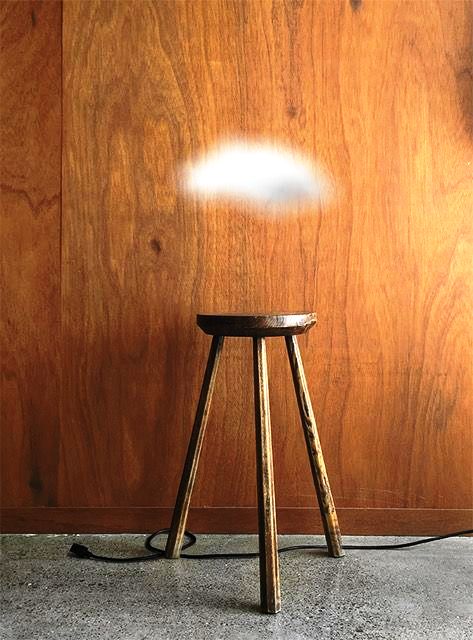 |
|
|
“Living in this house is different in a fundamental way from any other house I have lived or experienced,” Martha says. “It has a life and is in itself a way of life. I can connect with it and see beyond its functional qualities. Its lines are exciting, the openings are very generous, the proportions human but at the same time ambitious, the surfaces are rich yet the materials are humble and warm.
“Everything is an opportunity to create and dream, a feeling I have only experienced and I associate with my art studios, not typical family homes which can be suffocating, boring or exaggerated.”
About the exhibit, Martha writes: “Spaces hold emotions. Objects carry memories. Familiarizing with the house, to extract its secrets. Revisiting it, to capture its essence.”
Visiting the exhibit, Project #2293: Suburban Stories in Curious Times, “will be that of just visiting a regular family house with a lot of art on its walls. For those who want to investigate further we will be here to talk them through the concept and the artwork itself. Visitors will be able to access only a part of the house. The artwork will be very easy to spot and will be either 2-D work or fabric items,” Martha says. Except for basic furniture, the house will have no other visual elements or art objects, she says.
“The #2293 part of the title is a matter-of-fact, simply named after the house number but it is also intended to be the first in a series of group and site specific projects in residential building,s hence the use of #,” Martha says. “It is also a reference to the Case Studies Houses known as #16, #21 etc, a project that was commissioned by Arts and Architecture magazine in the ‘50s and included residential homes designed and built by Neutra, Eames, Saarinen, Koenig, amongst others.”
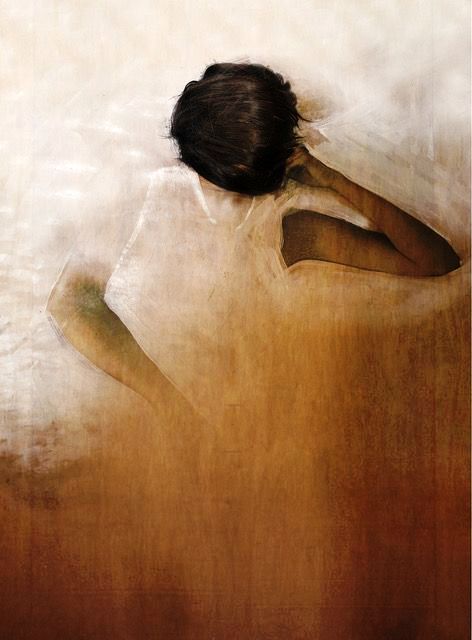 |
|
|
The subtitle, “ ‘Suburban Stories in Curious Times,’ refers to the three artists' experiences after relocating from some of the world's densest urban areas to Californian Suburbia,” Martha says.
All three artists have exhibited widely. Lucinda, who was raised in Great Britain, worked as a photographer in Tokyo before moving to the Peninsula. “In recent years,” the Project website reports, “Lucinda has been exploring her interest in printed textiles and produced a selection of designs for the Japanese textile collective LINK.”
Christina, born, like Martha, in Greece, is a photographer with a focus on “interpretations of interiors, architecture and urban space.” One of her books featured the homes of “Yves Saint Laurent, Hubert de Givenchy and Madeleine Castaing.”
Martha Sakellariou writes of her own work: “I have personally always produced work that is relative to the space and circumstances of my life and the way these are processed and experienced. In London I utilized private and public spaces for most of my projects as a means of occupying and familiarizing myself with my surroundings.”
“All three of us have a passion for Eichlers and art and this exhibition is homage to these spaces in an artistic way,” Martha says. “All the work is inspired by this house and life in it and we are hoping to communicate this with our audience and in particular to those who have the privilege to live in Eichler homes and appreciate the impact they can have on one’s quality of life.”
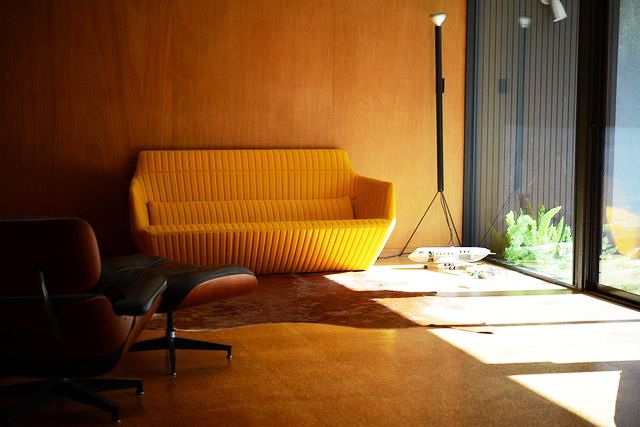 |
|
|
“From the moment I moved in to this space I was taken aback by its purity and simplicity, the way it is transformed by the natural light, the blending and reflections of indoor-outdoors, and how the seasonal changes affect its ambience,” Martha says of her house. “I didn't want to distract this balance, I wanted to follow and absorb it. “
“Our initial response was to keep the house as empty from furniture as possible and let it show where its focal points are, the areas of warmth and quiet, the ones with more change and activity.
“The house seems to have an existence of its own, and a liberating quality that has to be embraced. We added very few and light pieces of furniture and move them around according to our mood, the occasion or needs, the same way the light moves and exposes new areas of interest. Allowing that flow of things in the main part of the house has been an important part of living in it. There’s always a sense of unexpected and an element of surprise for us and our guests.”
The opening is 6 to 9 p.m. Saturday March 11 and the work will be up through March 18. To visit, email [email protected].
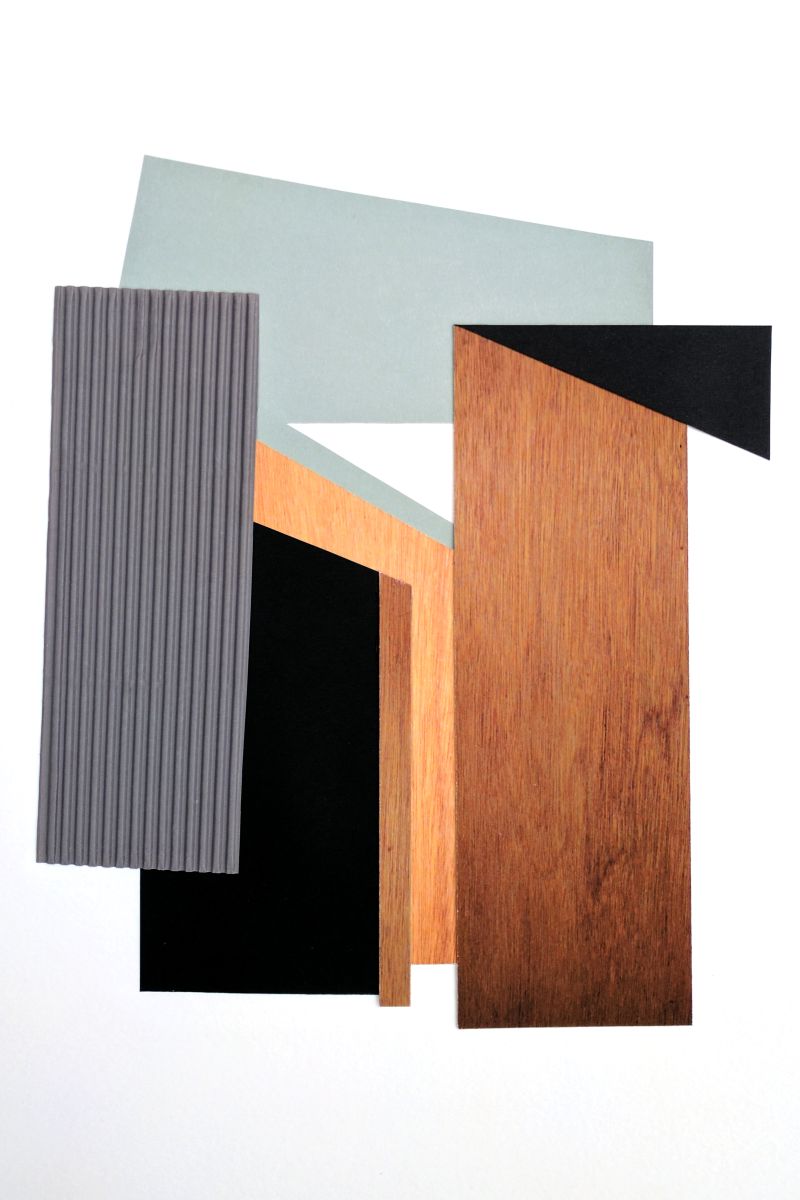 |
|
|
- ‹ previous
- 175 of 677
- next ›



